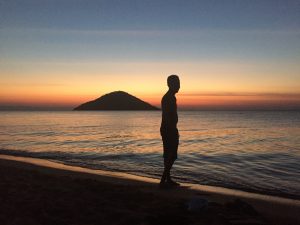Reading the short story Story of Your Life by Ted Chiang (the basis for the movie Arrival) I became preoccupied with the notion of time and how culture morphs the elusive concept. In the short story we learn- through the perspective of a linguistics professor-of humanity trying to communicate with extraterrestrial visitors who understand time very differently. The more she learns their language the more she begins to experience time as they do. From an scientific background time’s arrow is the result of entropy (caveat: after reading Story of Your Life this may just be an anthropocentric conclusion). Time’s one-directionality is a notion that I can safely assume ALL humans experience and understand. If not please contact me, I’d love to talk! This lead me to question whether culture impacts humanity’s understanding of time.
My time in Malawi has really showed me how culture truly warps time. Forewarning, I’m not saying that culture influences “scientific time” but instead that our perception and anthropomorphism of time. For example, in the States we have a saying that time is money and money is time. This causes us to be more sparing with our free time. Our culture on one hand stresses timeliness and scheduling which makes for an efficient workforce on the other hand workaholic-ism is also stressed.
Busyness is worn as a badge of honor, pervading every nook and cranny of American culture. From hospitals to college campuses, an inordinate workload has become our national pastime. Our cultural perception of time as limited and commercially valuable causes us to value this workload hysteria even with its exhaustive consequences. Using time to its fullest extent and more is a sign of maturity, success, righteousness, and modernity.
Here in Malawi time marches at a slower pace. There doesn’t seem to be a culture obsession with time. This is evident in what is playfully known as Malawian time. Wether it’s waiting to be served at a restaurant to scheduling meetings, time is negotiable. As a visitor I was at first taken aback by the long waits at restaurants, the tardiness, and the disregard for set meeting times. However, after taking a step back and realizing that I was projecting a Western understanding I was able to see the beauty in the slower pace and learned how to implement in my life.
Our cultural understanding of time is unnecessarily stressful and even though some of us may believe we work better in this stressful environment our mental health and health records show otherwise. In Malawi a lassie-fair approach does indeed make the work day and people more enjoyable (earning them the title Warm heart of Africa). I believe that both Malawian and Americans could learn so much from this difference. We know that valuing time does indeed create a more efficient society but at the same time commodifying time harms said society.
The more time I spend in Malawi the more I learn to value time with all of its paradoxes and abstractions. Time isn’t money, time is something much more special and profound. So let’s not waste it on our cultural obsession with success. Instead let’s learn to use it efficiently and meaningfully. Also who doesn’t love longer lunch breaks!








